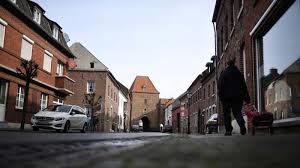
Germany’s Gangelt, a municipality in the district of Heinsberg, which shares its border with the Netherlands, became a hotspot for the novel coronavirus after thousands thronged to the town in February for a carnival celebration.
After blood samples of 500 residents were collected for antibodies to the virus, scientists concluded that one in seven persons have contracted the virus and are thus “immune,” MIT Technology Review reported. A few people were asymptomatic, the report added.
The short report, which was posted online, has significant ramifications for the town and the world. “To me it looks like we don’t yet have a large fraction of the population exposed,” says Nicholas Christakis, a doctor and social science researcher at Yale University was quoted as saying by MIT Technology Review.
“They had carnivals and festivals, but only 14% are positive. That means there is a lot more to go even in a hard-hit part of Germany,” he added.
The real infection rate in a place is of great significance as the higher it is, there is less devastation that lies in the future. In due course, when enough people become immune, say around half or three-quarters of the population, the virus won’t advance further. This concept is called herd immunity.
The German town of Gangelt, however, has not yet neared the threshold yet. To Christakis the number is “unfortunate” as it implies that the virus will wreak more havoc.
The German study is among the first to observe a population for any sign of earlier infections, vital data needed by scientists to learn the magnitude of the pandemic, the actual rate is and to know how many infected people show no symptoms, the report said.
More information from “sero-surveys” should be accessible, soon; from sources including hospitals in US. Stanford Medicine on April 6, announced it had set in motion its own serology test and had started screening medical professionals, including doctors and nurses, for antibodies.
“The test will enable us to determine which health-care workers might be at low risk for working with Covid-19 patients, as well as understanding disease prevalence in our communities,” spokesperson Lisa Kim told MIT Technology Review.
Preliminary results from hospitals are already doing the rounds among experts, said Christakis, who feels this data will allow us to get “closer to the truth” about how the novel coronavirus infection has advanced in cities across the United States.
“If you see 5% positive in your health-care workers, that means infection rates probably aren’t higher than that in your city,” he was quoted as saying by the report.
The survey in Germany was conducted out by a team led by virologist Hendrik Streeck at the University Hospital in Bonn, who stated that they had spoken to around 1,000 residents of Gangelt to give their blood samples, have their throats swabbed, and complete a survey, the report said.
They discovered that 2% of the town’s residents had contracted the virus and a total of 14% possessed antibodies, suggesting earlier infection. “This group of people, they say, ‘can no longer be infected with SARS-CoV-2’ as the virus is known to scientists,” the report added.